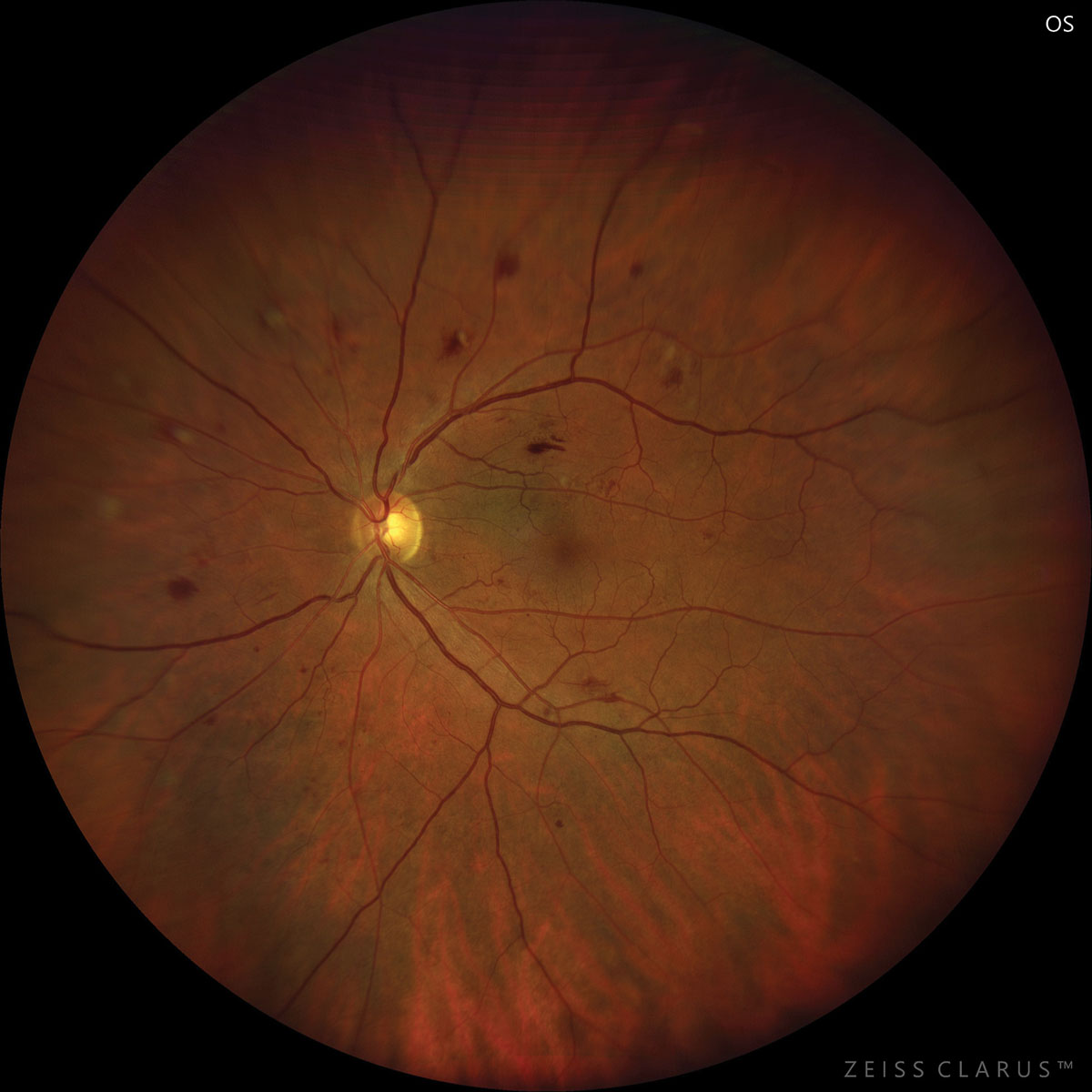 |
| Monitoring sALB levels and taking appropriate interventions to raise them to a minimum of 38.10g/L is recommended for mitigating the risk of DR in diabetes patients. Photo: Jay Haynie, OD. Click image to enlarge. |
A recent study of patients with type 2 diabetes suggests that the relationship between serum albumin (sALB) and the prevalence of diabetic retinopathy (DR) is non-linear. The findings, which showed that serum albumin levels less than 38.10 g/L are associated with an increased risk of DR, highlight the need for further prospective investigation.
This retrospective, cross-sectional study included 426 patients with type 2 diabetes who visited Guangdong Provincial People’s Hospital’s endocrine department and received an ophthalmology consultation from December 2017 to November 2018. The main outcome measure of the analysis was prevalence of diabetic retinopathy.
Of the study participants, 167 were diagnosed with diabetic retinopathy. The study authors reported that the relationship between serum albumin and diabetic retinopathy was non-linear, and data showed that serum albumin levels less than 38.10g/L are associated with an elevated risk of DR.
“Based on our analysis, sALB was negatively associated with the prevalence of DR and the relationship was non-linear. The inflection point was determined to be 38.10g/L by a two-piecewise logistic regression model,” according to the study authors, who recommend raising patients’ serum albumin levels to a minimum of 38.10g/L to help mitigate the risk of diabetic retinopathy.
“It suggested that we should carefully monitor sALB levels and take appropriate interventions if necessary in patients with type 2 diabetes mellitus in clinical practice,” they wrote in their recent paper, while emphasizing the need for further prospective research to “determine whether the change in serum albumin levels affected the incidence of diabetic retinopathy.”
Zeng GQ, Yao YF, Zhong JB, et al. The non-linear relationship between serum albumin and diabetic retinopathy in type 2 diabetes mellitus: a secondary analysis based on a cross-sectional study. BMC Ophthalmology. March 1, 2024 [Epub ahead of print]. |

